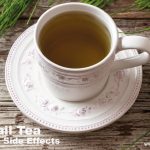Stretch marks, also known as striae, are scars that form when the skin is stretched beyond its normal capacity. They can appear as long, thin streaks that are pink, red, or purple in color when they first appear. Over time, they fade to a white or silver color and may become less noticeable.
Stretch marks occur when the skin is stretched rapidly, causing the underlying collagen and elastin fibers to rupture. This results in the appearance of scars on the surface of the skin. While they can occur in anyone, they are more common in women than in men.
Causes
There are several factors that can contribute to the development of stretch marks. These include:
- Pregnancy: One of the most common causes of stretch marks is pregnancy. As the baby grows, the skin on the abdomen is stretched to accommodate the growing fetus. This can cause stretch marks to appear on the stomach, breasts, and thighs.
- Rapid weight gain or loss – Significant weight gain or loss can cause the skin to stretch or shrink rapidly, leading to the formation of stretch marks.
- Puberty: During puberty, the body undergoes rapid growth and changes. This can cause stretch marks to appear on the thighs, hips, and breasts.
- Genetics: Some people are more prone to developing stretch marks due to their genetic makeup. If your mother or father had stretch marks, you may be more likely to develop them as well.
- Corticosteroids: Corticosteroids are a type of medication that is used to treat a variety of conditions, including asthma, arthritis, and eczema. Prolonged use of corticosteroids can weaken the skin and make it more prone to developing stretch marks.
- Medical conditions: Certain medical conditions, such as Cushing’s syndrome and Marfan syndrome, can increase the likelihood of developing stretch marks.
Symptoms
The symptoms of stretch marks can vary depending on the person and the cause of the stretch marks. Common symptoms include:
- Appearance – Stretch marks often appear as long, narrow streaks or lines on the skin that may be red, purple, or silver in color.
- Location – Stretch marks can occur on various parts of the body, including the abdomen, hips, thighs, and breasts.
- Physical discomfort – Some people may experience itching or discomfort around their stretch marks.
- Emotional impact – Stretch marks can have a significant emotional impact on some people, causing them to feel self-conscious or embarrassed.
Prevention
While it may not be possible to completely prevent stretch marks from forming, there are several things you can do to reduce your risk of developing them. These include:
- Maintain a healthy weight: One of the most important things you can do to prevent stretch marks is to maintain a healthy weight. This means eating a balanced diet and getting regular exercise.
- Hydrate: Keeping your skin hydrated is also important for preventing stretch marks. Be sure to drink plenty of water and use a moisturizer to keep your skin soft and supple.
- Use sunscreen: Sun damage can weaken the skin and make it more prone to developing stretch marks. Be sure to use a broad-spectrum sunscreen with an SPF of at least 30 when you are outside.
- Avoid rapid weight gain: Rapid weight gain can cause stretch marks to form, so it is important to avoid gaining weight too quickly.
- Use topical creams: There are several topical creams that can be used to help prevent stretch marks from forming. These creams contain ingredients like vitamin E, hyaluronic acid, and centella asiatica that help to keep the skin elastic and supple.
Treatment
If you already have stretch marks, there are several treatment options available that can help to reduce their appearance. These include:
- Topical creams: Topical creams can also be used to help reduce the appearance of stretch marks. These creams contain ingredients like retinoland glycolic acid that help to increase collagen production and improve skin texture. It is important to note that some people may be allergic to certain ingredients, so it is always best to consult with a dermatologist before using any new topical products.
- Laser therapy: Laser therapy is another option for treating stretch marks. This treatment uses a focused beam of light to stimulate collagen production and improve skin texture. Multiple treatments may be necessary to achieve optimal results.
- Microdermabrasion: Microdermabrasion is a non-invasive treatment that involves using a special device to remove the outer layer of dead skin cells. This can help to improve skin texture and reduce the appearance of stretch marks.
- Chemical peels: Chemical peels are another non-invasive treatment that can help to improve the appearance of stretch marks. This treatment involves applying a special solution to the skin that causes the top layer of skin to peel off, revealing smoother, more even skin.
- Microneedling: Microneedling is a minimally invasive treatment that involves using a small device with tiny needles to create micro-injuries in the skin. This stimulates collagen production and can help to improve skin texture and reduce the appearance of stretch marks.
Natural Treatment
Here are some natural treatments that may help reduce the appearance of stretch marks:
Aloe vera – Aloe vera has moisturizing properties that can help improve skin elasticity and reduce the appearance of stretch marks. Apply aloe vera gel directly to the affected area and leave it on for 15-20 minutes before rinsing it off with warm water.
Coconut oil – Coconut oil is rich in antioxidants and has moisturizing properties that can help improve skin elasticity. Apply coconut oil to the affected area and massage it into the skin for a few minutes.
Vitamin E oil – Vitamin E is known for its skin-healing properties and can help reduce the appearance of stretch marks. Apply vitamin E oil to the affected area and massage it into the skin for a few minutes.
Sugar scrub – Sugar can help exfoliate the skin and improve its appearance. Mix equal parts sugar and olive oil to create a scrub, then gently massage the mixture into the affected area for a few minutes before rinsing it off with warm water.
Lemon juice – Lemon juice is a natural exfoliant and can help improve skin tone. Apply freshly squeezed lemon juice to the affected area and leave it on for 10-15 minutes before rinsing it off with warm water.
It is important to note that natural remedies may not be as effective as medical treatments, and results may vary depending on the individual. It is also important to speak with a healthcare professional before trying any new treatments, especially if you have any underlying medical conditions.
Essential Oils to treat stretch marks
There are some essential oils that have been shown to have potential benefits for reducing the appearance of stretch marks, but it is important to note that more research is needed to confirm their effectiveness. Additionally, essential oils should always be diluted properly before being applied topically and should be avoided by pregnant or breastfeeding women, as well as individuals with allergies or sensitivities to the oils.
Here are some essential oils that may be effective for stretch marks:
- Lavender oil – Lavender oil is known for its skin-soothing properties and may help reduce the appearance of stretch marks. Dilute a few drops of lavender oil in a carrier oil, such as coconut or jojoba oil, and apply to the affected area.
- Frankincense oil – Frankincense oil has anti-inflammatory and skin-healing properties and may help reduce the appearance of stretch marks. Dilute a few drops of frankincense oil in a carrier oil and apply to the affected area.
- Geranium oil – Geranium oil is thought to have skin-regenerating properties and may help improve skin elasticity, reducing the appearance of stretch marks. Dilute a few drops of geranium oil in a carrier oil and apply to the affected area.
- Neroli oil – Neroli oil is known for its skin-regenerating properties and may help reduce the appearance of stretch marks. Dilute a few drops of neroli oil in a carrier oil and apply to the affected area.
Again, it is important to use caution when using essential oils, and always dilute them properly before applying them to the skin. If you experience any adverse reactions, such as redness or irritation, discontinue use immediately and speak with a healthcare professional.
Conclusion
Stretch marks are a common skin condition that can be caused by a variety of factors, including pregnancy, rapid weight gain, and genetics. While it may not be possible to completely prevent them from forming, there are several things you can do to reduce your risk, such as maintaining a healthy weight, keeping your skin hydrated, and using sunscreen. If you already have stretch marks, there are several treatment options available that can help to reduce their appearance, such as topical creams, laser therapy, microdermabrasion, chemical peels, and microneedling. It is important to talk to a dermatologist to determine the best treatment option for you. With the right care and treatment, you can improve the appearance of your skin and feel more confident in your own skin.
References
- Ud-Din S, McAnelly SL, Bowring A, Whiteside S, Morris J, Chaudhry I, Bayat A. A double-blind controlled clinical trial assessing the effect of topical gels on striae distensae (stretch marks): a non-invasive imaging, morphological and immunohistochemical study. Arch Dermatol Res. 2013 Sep;305(7):603-17.
- Ud-Din S, McGeorge D, Bayat A. Topical management of striae distensae (stretch marks): prevention and therapy of striae rubrae and albae. J Eur Acad Dermatol Venereol. 2016 Feb;30(2):211-22.
- Korgavkar K, Wang F. Stretch marks during pregnancy: a review of topical prevention. Br J Dermatol. 2015 Mar;172(3):606-15.
- Timur Taşhan S, Kafkasli A. The effect of bitter almond oil and massaging on striae gravidarum in primiparaous women. J Clin Nurs. 2012 Jun;21(11-12):1570-6.
- Elsaie ML, Hussein MS, Tawfik AA, Emam HM, Badawi MA, Fawzy MM, Shokeir HA. Comparison of the effectiveness of two fluences using long-pulsed Nd:YAG laser in the treatment of striae distensae. Histological and morphometric evaluation. Lasers Med Sci. 2016 Dec;31(9):1845-1853.
This website does not provide medical advice.
All information provided on this website, and on associated social media networks, including but not limited to texts, images, and numbers are for general information purpose only. It is not intended as medical advice and it does not include all possible precautions, side effects, or interactions that may occur. Neither NaturalLivingOnline.com nor its author/founder take responsibility for how you use this information. Statements contained on NaturalLivingOnline.com have not been evaluated by the FDA. You should conduct thorough research via multiple sources and consult your physician or qualified doctor before using any essential oil or herbal remedy. Information on NaturalLivingOnline.com must not be relied upon for medical, legal, financial or other decisions.













